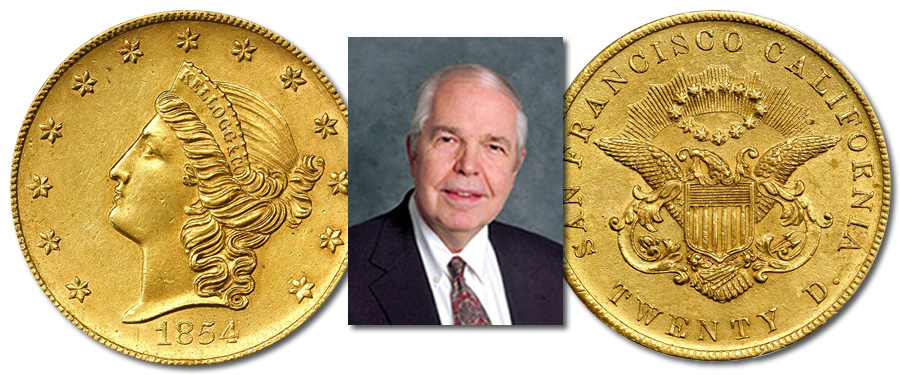
In August of 1908, two boys named James McFarland and John May were swimming in the Little Blue River in Thayer County, Nebraska. While resting on a small sandbar near the limestone bluff, John May kicked up a gold coin. It turned out to be a Kellogg and Co. $20 coin minted in San Francisco during the Gold Rush. John, an orphan who lived in Belvidere, was able to rake two more coins from the sand near the bluff.
John lived with a man named Spaulding who confiscated the coins and demanded to know where they were found. According to the Hebron Journal, the boys refused to tell Spaulding and returned to the bluff the next day. James McFarland found a small hole near the old mouth of the cave and retrieved a sack containing $1,100 in Kellogg $20 gold coins. (These 1854 and 1855 minted coins apparently had been hidden by William Abernathy, a former California miner who returned to Nebraska to take up ranching and who was killed by the Pawnee in August 1867.)
Evidently, the seemingly heartless Spaulding, who was not John May’s legal guardian, kept John’s three Kellogg coins. The whereabouts of the coins are unknown today.
Reports indicate that the remaining $1,100 in Kellogg $20 coins was deposited into a bank in Geneva, Nebraska. The coins were received as a cash deposit, so tracing them has become quite difficult.
The site of the find was destroyed years ago for safety reasons. The limestone bluff is fragile, and residents feared a cave-in.
Much is left to be discovered. What happened to the 58 $20 coins? How were they dispersed, and who has them now? Or were they melted years ago? The beauty of research and the enjoyment of numismatics often come not from the actual acquisition of a coin or a bit of information, but from what occurs during the search for discovery. It is through the search that we learn, grow, and share. The contemplation today of an actual specimen of an 1854 or 1855 Kellogg & Co. $20 gold piece becomes all the more interesting when one considers the coin’s history—how it was minted and what its later experiences may have been.





